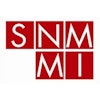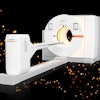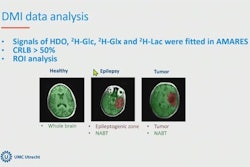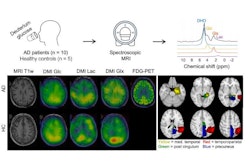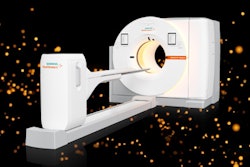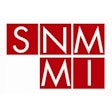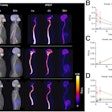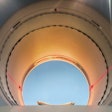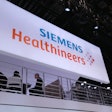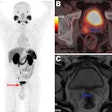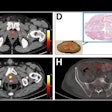Deuterium metabolic imaging (DMI) shows promise as an alternative to FDG-PET for dementia diagnosis, although it is challenged by low spatial resolution, Danish investigators have reported.
The findings could address "a growing demand for paraclinical tools such as the glucose analogue [F-18 FDG-PET]," noted a team led by medical student Kamilla Trosborg of Aarhus University in Denmark. Trosborg presented the research at the recent International Society for Magnetic Resonance in Medicine (ISMRM) meeting in Honolulu.
FDG-PET is part of the current European recommendations for the diagnosis of various dementia conditions, including Alzheimer's disease. But it has its limitations, Trosborg said.
"While FDG must be produced on site -- thus limiting the use of FDG-PET -- DMI uses D-[6,6'-2H2]glucose, which is an easily transportable, nonradioactive, and stable isotope with a long shelf-life," she and colleagues explained. "This MRI-based technique traces glucose and its downstream metabolites glutamine+glutamate, lactate, and water."
There is a drawback with DMI, however, Trosborg said, noting that "spectral separation of downstream metabolites is challenging at 3-tesla with low signal-to-noise ratio and spectral overlap limiting the achievable spatial resolution and quantification." To address this problem, the investigators explored whether high spectral resolution is actually needed to correlate DMI with FDG-PET.
The team conducted a study that included 10 patients newly diagnosed with Alzheimer's disease. Each participant was given 75 g of [6,6´-2H2]glucose before being scanned on a 3-tesla MRI scanner. DMI data consisted of four averages of 3D MR spectroscopic imaging using a soft pulse and a density-weighted phase encoding; anatomical imaging consisted of a T1-weighted 3D inversion-recovery prepared fast spoiled gradient echo sequence. The researchers also obtained FDG-PET images for study participants from hospital records.
The mean time from patients' glucose ingestion to DMI scanning was 110.6 minutes. The team reported the following:
Association between FDG-PET and DMI for Alzheimer's diagnosis | ||
Metabolites | Pearson correlation coefficient* | p-value |
| Semiheavy water (DHO) | 0.78 | 0.001 |
| Glucose | 0.69 | 0.001 |
| Glutamine and glutamate | 0.73 | 0.001 |
| Lactate | 0.08 | 0.37 |
| * Values between 0.5 and one indicate a strong correlation. | ||
DMI shows promise as an FDG-PET alternative for assessing glucose uptake in Alzheimer's patients, according to the researchers.
"Compared to individual DMI metabolites, using a combination of all metabolites, which would also be achievable at lower spectral resolutions, yields a substantial increase in signal-to-noise ratio only at a small cost regarding the correlation with FDG-PET," they concluded. "This suggests that compromising on spectral resolution to increase spatial resolution is a positive trade-off."



